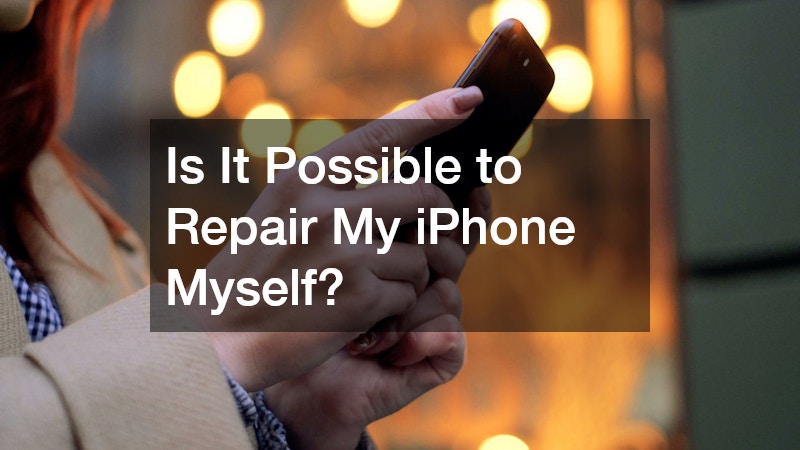Understanding the options and best practices for getting your iPhone fixed can save time, money, and hassle. This guide will address common questions related to iPhone repair and provide solutions to ensure your device is up and running efficiently.
Where Should I Get My iPhone Repaired?
Apple Authorized Service Providers
Apple Authorized Service Providers (AASPs) offer the advantage of certified technicians who ensure your device is in capable hands. Choosing AASPs also guarantees that the repairs are compliant with Apple’s warranty guidelines, preserving your warranty coverage.
Repair shops authorized by Apple utilize genuine Apple parts, which maintain the original quality and performance of your device. This approach minimizes future issues that could arise from using subpar components from unauthorized repairs.
In addition to quality assurance, opting for an AASP often ensures quicker service due to their prioritized access to parts and technical support. This network of providers offers peace of mind, knowing that your device will receive expert care.
Third-Party Repair Shops
Third-party repair shops can be a viable option for iPhone repairs, often providing cost savings compared to official services. However, it’s essential to assess their reliability by researching customer reviews and repair warranties they may offer.
While many third-party services offer competitive pricing, there is a potential risk of voiding your warranty if non-genuine parts are used. It’s crucial to inquire about the parts’ quality and ensure they meet the necessary standards.
Despite potential risks, some third-party shops specialize in quick fixes and offer convenience due to their widespread locations. Balancing cost and quality is key when selecting a third-party repair provider.
How Can I Determine If My iPhone Warranty Covers My Issue?
Checking Warranty Status
Determining the warranty status of your iPhone is a straightforward process that can be done via Apple’s official website. By entering your device’s serial number into Apple’s warranty status portal, you can quickly identify your coverage.
Knowing the warranty status is crucial as it impacts your repair options and potential costs. If your warranty is still active, certain repairs will be covered, preventing additional out-of-pocket expenses.
It is advisable to regularly verify your warranty status, especially before experiencing any issues, to fully understand your entitlements. This knowledge empowers you to make informed decisions regarding repair services.
Understanding AppleCare+ Coverage
AppleCare+ extends your warranty and provides additional coverage for accidental damage, an essential consideration for iPhone users seeking comprehensive protection. By understanding its terms, you can determine how it affects potential repair costs.
Unlike the standard warranty, AppleCare+ covers a broader range of issues, including screen damage and battery failures, typically with lower service fees. This extended protection is beneficial if you frequently encounter accidental damage or wear and tear.
It is important to weigh the benefits of AppleCare+ against its cost, as it offers peace of mind and potential savings on significant repairs over your device’s lifespan. Thoroughly understanding your coverage can facilitate more strategic repair decisions.
What Are the Common iPhone Issues That Require Professional Repair?
Broken Screens and Display Issues
Screen repairs are among the most common iPhone fixes, necessary when cracks or unresponsive touch screens occur. Professionals employ specialized tools to replace or repair your device’s display, restoring its functionality and appearance.
Display issues, such as discoloration or dead pixels, often necessitate expert intervention to diagnose internal causes. Certified technicians who follow Apple’s guidelines can efficiently address these complications, ensuring lasting solutions.
Without proper handling, screen and display repairs can lead to secondary damage. Thus, professional repair services are recommended to maintain the integrity and longevity of your device.
Battery and Charging Problems
Batteries gradually degrade over time, leading to diminished performance and charging issues. Professional diagnosis ensures that repairs or replacements effectively address these common concerns.
Charging problems may arise from faulty ports or cables, missed by amateurs but identifiable by trained technicians. Swift and accurate solutions from professionals prevent further damage to your device.
Professional battery services often include calibration and optimization, extending battery life and enhancing device efficiency. Relying on experts ensures that your iPhone maintains optimal performance levels.
Is It Possible to Repair My iPhone Myself?
Advantages and Disadvantages of DIY Repairs
DIY repairs can be an attractive option for tech-savvy individuals seeking cost savings and personal satisfaction. Completing a repair at home avoids service fees and empowers users with new skills.
However, the risks of DIY repairs include potential warranty voiding and unintentional damage from improper techniques. Mistakes can escalate repair complexity and increase costs if professional intervention becomes necessary.
Weighing the pros and cons is crucial when considering a DIY approach, as it requires assessing one’s mechanical aptitude and access to quality parts and guides. Informed decisions minimize potential adverse outcomes.
Resources for DIY iPhone Repairs
For those venturing into DIY repairs, credible resources like repair guides and video tutorials are invaluable. Establishments like iFixit offer detailed instructions, ensuring proper procedures are followed during the repair process.
Accessing high-quality parts is equally important for successful DIY repairs. Trusted suppliers provide compatible components that meet your iPhone’s specifications, crucial for maintaining performance and reliability.
Aside from parts and guides, online forums and communities offer advice and support for DIY repair enthusiasts. Engaging with these resources fosters learning and enhances repair outcomes.
